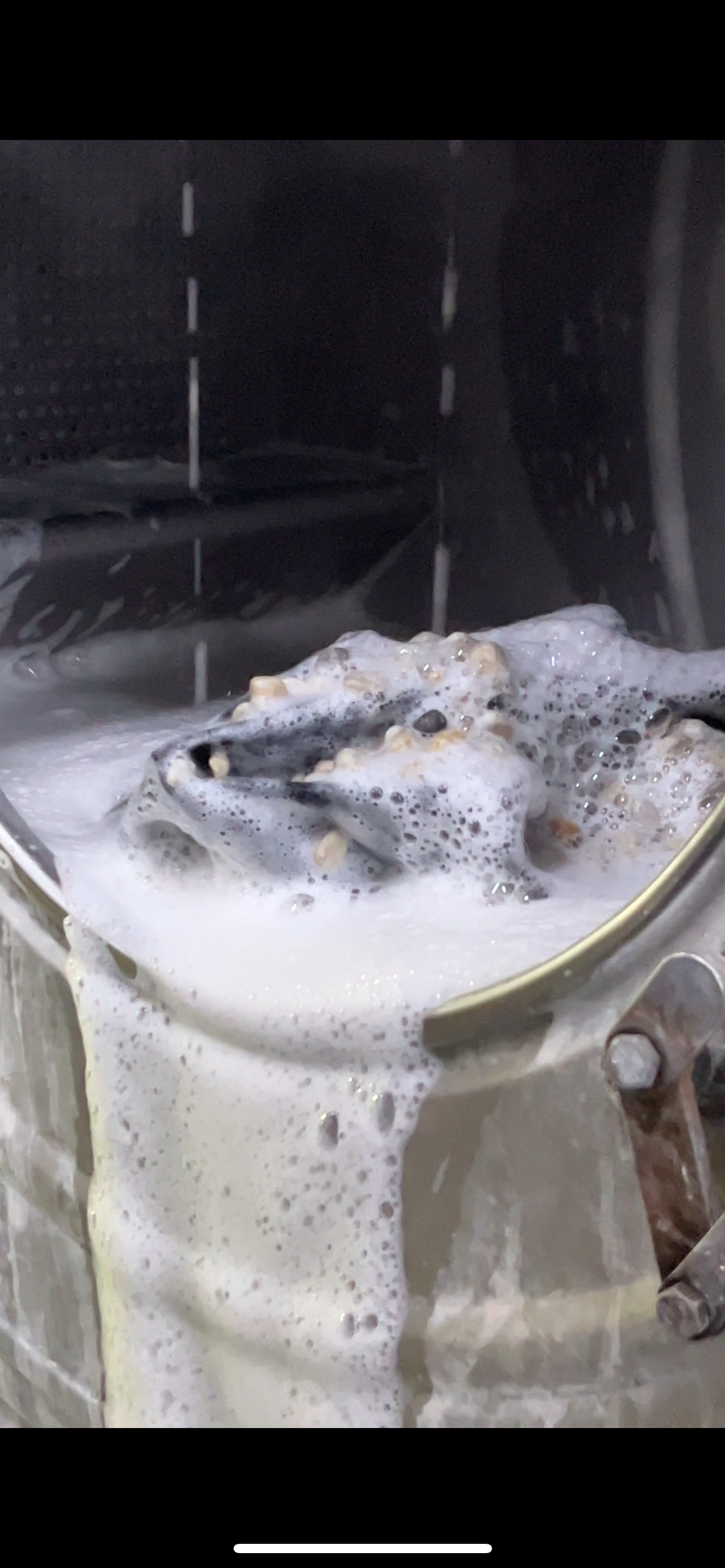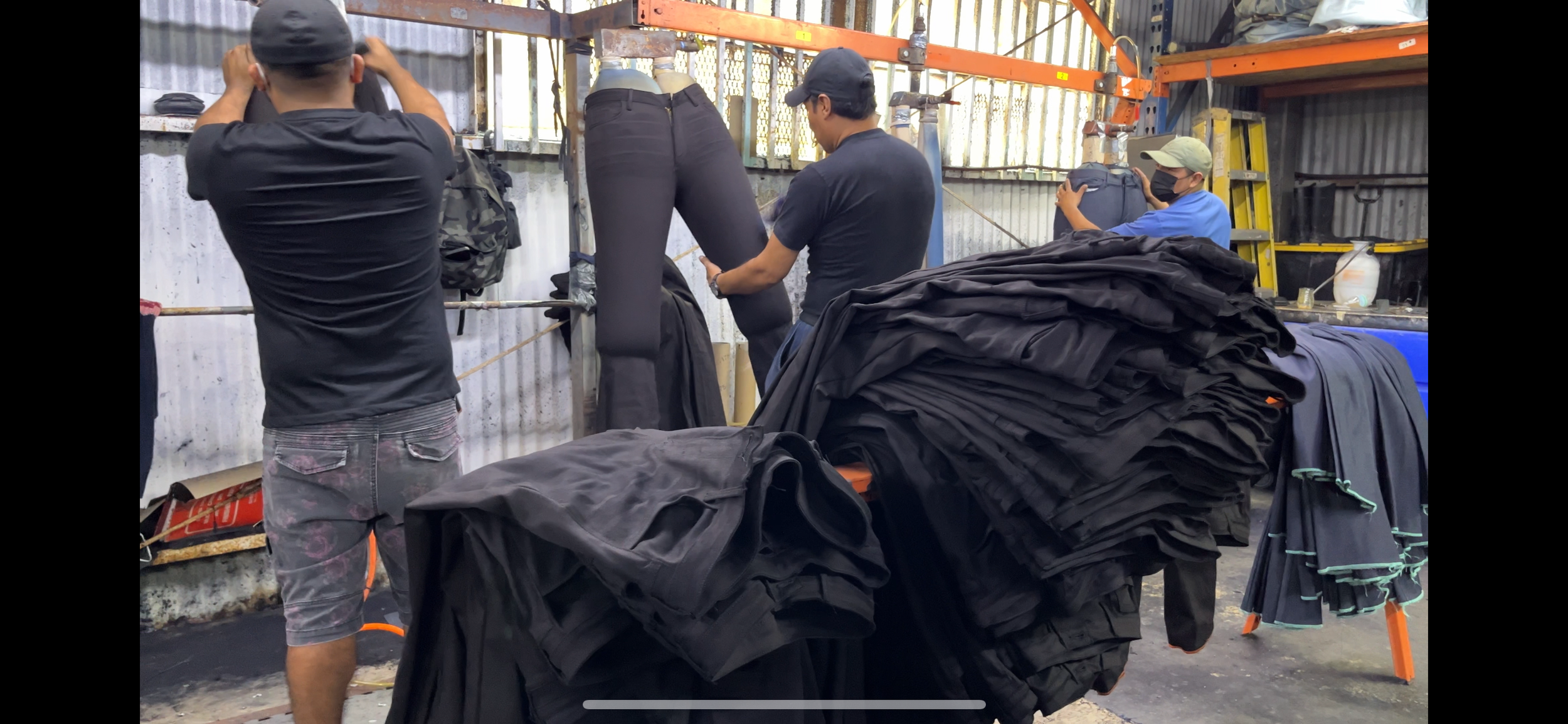OUR FACILITY
LA VINTAGE LAUNDRY CORP. delivers premium dyeing services, specializing in lab dips and custom fabric solutions. We prioritize safety, ensuring a secure and healthy work environment for our team while using state-of-the-art equipment to achieve consistent, vibrant results. Our commitment to precision and quality guarantees that every project meets the highest standards, helping you bring your creative designs to life with accuracy and reliability.
COLOR SOLUTIONS
liquid mixture containing dyes, water, and various chemicals used to color fabrics or garments. The solution is carefully prepared based on the desired shade, fiber type, and dyeing method. Fabrics are immersed in this solution, allowing the dye to bond with the material's fibers, resulting in a uniform, long-lasting color. Temperature, pH, and additives are precisely controlled to ensure the dyeing process is successful and the color outcome is accurate.
LABS
Specialized areas where dye formulations and color matching are tested before full-scale production. Lab technicians prepare small samples, called lab dips, to ensure the desired color can be achieved on the fabric or garment. They adjust dye ratios, chemicals, and process parameters to create accurate color matches and ensure consistency. The lab plays a crucial role in quality control, ensuring that the final product meets customer specifications before moving to bulk dyeing.
SAMPLES
Samples are small test pieces of fabric or garments dyed to demonstrate the final color and finish. These samples, often called lab dips, are produced during the color development phase to ensure the dye formula and process meet customer specifications. They allow both the dye house and the customer to assess color accuracy, quality, and consistency before proceeding with bulk production.
FULL PRODUCTION
The full production process begins with the careful preparation of garments for dyeing. Fabrics or garments are immersed in large dye vats where specialized dyes are applied to achieve the desired color. The dyeing process is meticulously controlled to ensure consistent and vibrant results. After the garments have absorbed the dye, they are transferred to a rinse station, where they are thoroughly rinsed to remove any excess dye and to set the color. The rinsing process ensures the garments are clean and colorfast, ready for the next stage of the production line, such as tumble drying.
DRYERS
The drying process is a crucial step in fabric finishing. After dyeing, fabrics are subjected to controlled drying to remove excess moisture and ensure uniform color fixation. This process typically involves using a combination of hot air and mechanical drying methods, such as tumble drying or conveyor belt systems. The drying temperature and duration are carefully monitored to prevent fabric damage and maintain quality. Proper drying enhances the fabric's appearance, improves colorfastness, and prepares it for subsequent finishing processes, ensuring the final product meets the required standards.
QUALITY CHECK
The quality check process ensures that dyed fabrics meet established standards. It begins with inspecting raw materials for defects, followed by evaluating dyed samples for color uniformity and shade accuracy. Physical tests for colorfastness, shrinkage, and strength are also performed. Any inconsistencies prompt corrective actions, ensuring the final products are defect-free and meet customer expectations.
FINAL PACKING AND SHIPMENT
The final packing and shipment process in a involves carefully packaging dyed fabrics to ensure their protection during transit. Fabrics are inspected for quality before being folded, rolled, or packaged according to customer specifications. Proper labeling and documentation accompany each shipment to facilitate tracking and delivery. The packed items are then organized for transport, ensuring timely delivery while maintaining product integrity and customer satisfaction.














